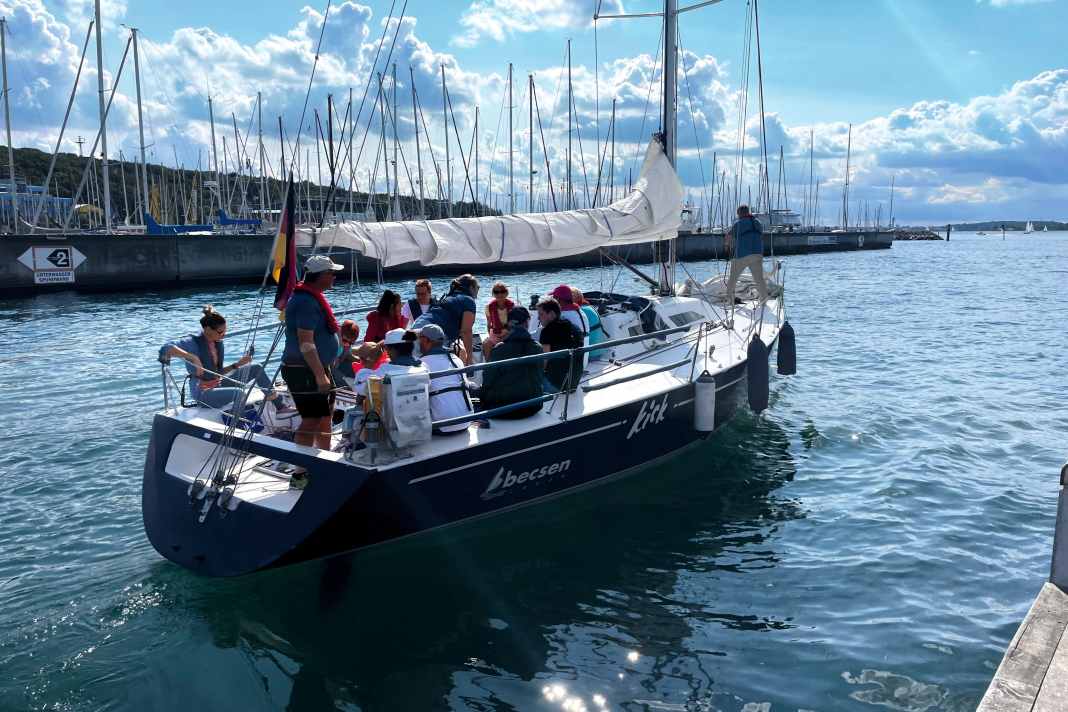



Who's actually all coming today?" Karl Overdick asks the rest of the crew as he is the last to come on board. "Actually, there should have been eight of us, but one of us cancelled spontaneously," replies Nils Hoeppner. He is the first chairman of the association that was founded to keep the "Kick" sailing.
"I've known the ship since the nineties," says Hoeppner. This affinity is easy to recognise: When rigging up and taking a tour of the ship, it becomes clear that the 59-year-old knows the ship inside out and has turned every centimetre once.
The origin of the Dubois 40
The Dubois 40 is owned by the association Segel- und Ausbildungs-Initiative Laboe e. V. (S.A.I.L.) and was donated by the previous owner. She is 12.40 metres long and 3.75 metres wide, with a displacement of around six tonnes.
The regatta yacht was launched for the first time in 1995. The very next year, the Dubois won the world championship title in the IMS (International Measurement System).
Due to the age of their "Kick", the members of the association always have new construction sites on board, and so a lot of their own work is necessary for her maintenance. This is the only way they can keep the annual membership fee comparatively low at 150 euros per person and 225 euros per family, says Hoeppner.
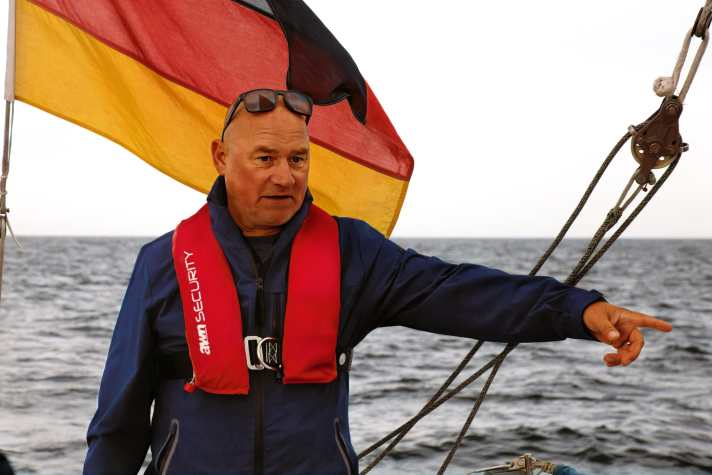
The 'Kick' is moved frequently, whether on a chain cruise on a summer holiday or after work." Nils Hoeppner
Associations have also been founded for large classic ships such as the twelve-oared "Heti" and "Anita". What distinguishes these two examples from the Labo project, however, is that they do not own the ships.
"We wouldn't be able to maintain the ship ourselves with our annual budget," explains Max Eick. The chairman of the Friends of the Sailing Yacht Heti e. V. association explains that the boat therefore belongs to the Hamburg Maritime Foundation and that they only have a kind of right of use for the traditional ship.
The search for young skippers
The search for people who are willing to take on more responsibility than others unites the clubs. "Our biggest problem right now is finding skippers who want to sail the 'Heti'," says Eick. Although there is a pool of around 70 potential co-sailors, the search for young skippers in particular is "the bottleneck".
Skipper requirements and training
The requirements for the person in charge on board are lower than you might think: "All you need is a sports coastal skipper's licence and a radio licence," says Eick. Potential skippers of the "Heti" would also only have to complete a weekend of skipper training on the ship.
It works in a similar way at S.A.I.L. According to Hoeppner, the association has twelve skippers who are regularly in charge of the ship. Only this group of people knows the number combination of the lock with which the Dubois 40 is locked at its berth in Laboe.
However, the hurdles are somewhat higher at the Association for Seafarers (GfS), which is based on Lake Constance. Harald Weyrich has been a member of the association for 40 years, he explains: "Potential skippers have to prove that they have a sports sailing licence (SSS) or a sports offshore skipper's licence (SHS). Then they go through a proper selection process."
Whether an SSS or SHS is a prerequisite depends on the area in which the skippers want to sail with the GfS ships later on. "We generally say that if you can't get to the next harbour within 24 hours on the tour, an SHS is necessary," says Weyrich, who is also involved in the association as a press officer.
If applicants can provide this proof of knowledge, they sail on two tours with an experienced skipper and guide the boat, says the former computer scientist. "The experienced skipper is responsible, but the co-skipper is in charge of the boat," he says. "The skipper writes the co-skipper a kind of assessment form and, depending on how it goes, the applicant is then allowed to steer the ship independently on future trips around the world."
Planning activities
While the "Kick" mainly sails in the Baltic Sea, where the club members also organise chain trips during their summer holidays, the two GfS boats mainly sail in the south.
"That's why we always plan two years in advance. For 2026 and 2027, for example, our cruise committee has planned a trip to South America," explains Weyrich. The boats, a Hallberg-Rassy 48 and an X-Yachts Xc45, are alternately sailed one winter and maintained the following winter.
Malte Sporenberg in particular knows that even a yacht maintained by several club members still means enough work for everyone. The 68-year-old is active on the Labo board as a rigging master. He is therefore responsible for maintenance and technical matters.
In addition to the membership fee paid by the 70 or so paying members, the organisation receives financial support from donations. In addition, skippers who hire the boat pay a small sailing fee on a daily basis, which they then usually pass on to the crew.
"I've reserved the boat for the start of the Ocean Race," says Karl Overdick and takes the opportunity to ask if anyone present would like to join him. And indeed, 59-year-old Christoph Schmitz immediately signs up to watch the spectacle of the IMOCA regatta from the water.
There is regular cooperation with Kiel University of Applied Sciences for the technology of the "Kick". In the near future, for example, the sailors will receive brand new navigation electronics with displays specially programmed for the boat.
"This is a collaboration that benefits both sides: The "Kick" serves as a test platform for the students and we are pleased to have new technology on board," says Nils Hoeppner.
Strengthening a sense of community
Their regular date is sailing together on Wednesdays. The friends usually spend a few hours together on the water after work.
Lutz Steiner is also a new guest on today's trip. Although the 55-year-old once obtained a sailing licence, he has not sailed actively since then. And now he is interested in the S.A.I.L.
"Do we want to sail towards the lighthouse or into Kiel?" asks Karl Overdick. He is in charge of the Wednesday sailing programme.
In the end, they decide to head north. "Let's go to the lighthouse!" shouts one of the men. And Lutz Steiner, who is not yet a member, is delighted and says: "Wow, I've never made it that far before!" His anticipation is clear to see and they quickly set course for the tower.
Negative experiences
While Nils Hoeppner and his colleagues have only had positive experiences with the model of an association to operate the ship since 2012, Rainer Seehase has had a different experience. Now 79 years old, he was the second chairman of the Alster sailing club for many years.

In the beginning, their concept was a complete success: Seehase and a few friends were always sailing on chartered boats during the semester holidays when they were students. Because they also wanted to sail for shorter periods of time, for example only on long weekends, they had the idea of looking for a boat and founding an association to run it.
"I then found a 38 Swan and we founded the club," recalls Seehase. "That was in 1984."
They travelled with the ship on various tours for six years. "Then a mate sold the ship and it was replaced by a 42-foot Baltic," he says.
This was also replaced one day by a Swan 51, which the club members acquired from the Götabanken bankruptcy and sailed for many years.
Seehase thinks back fondly: "It was a great time! We did lots of great tours, for example to the Shetland Islands." A larger tour was planned every five years. "We sailed to Turkey and back once, travelled to the Canary Islands or the Azores," he says.
Financial challenges
However, financing poses challenges for many clubs. While Nils Hoeppner and his team own the boat after it was donated to them, it was a different story at the Alster sailing club.
"Back then, we had an owners' association that leased the respective ship exclusively to the sailing club," explains Seehase. At some point, however, the association got into financial difficulties. Seehase helped to ensure that the association continued to exist.
"The club is now rescued and debt-free, everything has been back on track since 1 January," he says. The club had previously taken on a Baltic 64. "We no longer operate a seagoing vessel, but are now focussing on sailing with Alster dinghies," says Seehase.
With large classic ships such as the Zwölfer, it is common for the ship not to be owned by the associations that own it. While the "Heti" belongs to the Hamburg Maritime Foundation, the "Anita" is outsourced to a non-profit limited company.
Support organisations and financial security
"Our non-profit association Friends of the Sailing Yacht Anita is legally independent and has the general purpose of collecting donations and making them available to the ship," says Dr Joachim Arndt from the association. In 2008, the association that managed the "Anita" also had to be wound up.
However, following extensive restoration work, the "Anita" has been sailing again since 2012. Since then, Dr Arndt and his fellow club members have been trying to raise funds so that the operation of the "Anita" is not jeopardised again.
The 12mR "Heti" also has a kind of support organisation in the form of the "Freunde der Segelyacht "Heti" e. V. association. "In our case, the Hamburg Maritime Foundation is the owner of the ship," says Max Eick, First Chairman of the Friends of the Heti. He explains: "The association bears the costs of using the ship and maintains it. But it is also obliged to move the ship and show it to the public."
The range of associations that have formed around the operation of individual yachts is colourful. They are all united by the difficulty of maintaining the financing of costly projects.
If this is successful, this form of operation will be a successful model with many advantages for everyone involved.
Examples of club boats
Twelve "Heti"
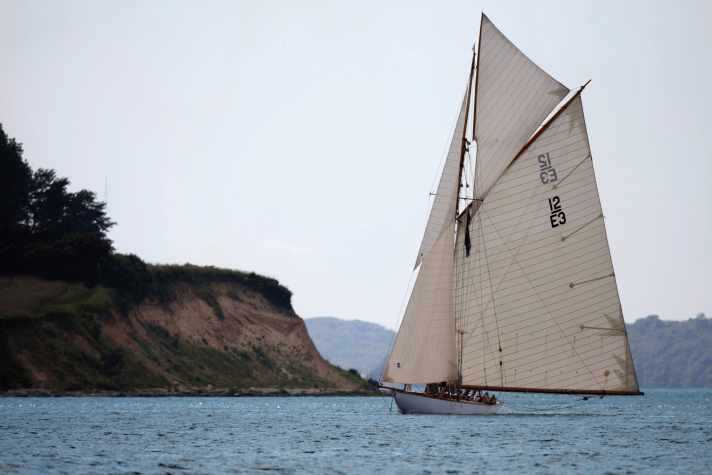
The first-rule twelve-man was built in 1912 at Max Oertz's shipyard in Hamburg. The well-known German yacht designer had also designed the ship. After several changes of ownership, the Hamburg Maritime Foundation took over the twelve-oared yacht, which had been restored by the Youth in Labour Association. In 2001, the Friends of the Sailing Yacht "Heti" association was founded and has since made donations to ensure that the boat can be sailed as far as possible in its original condition.
Twelve "Anita"
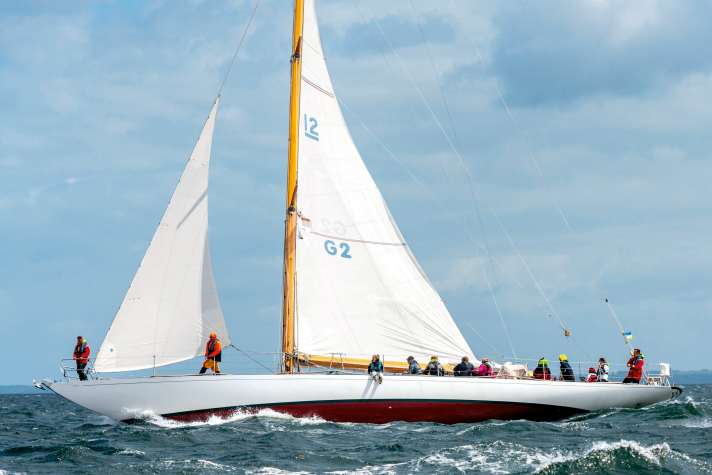
The classic twelve-man was built by Abeking & Rasmussen in the 1930s. From 1962, she sailed as a cruising boat for the Baltic Sea Sailing Association. However, a survey in 2008 revealed considerable defects. The expected costs exceeded the association's funds and it was dissolved. The "Anita" was transferred to the Rheingau Sailing Club in accordance with its articles of association, the current support association was founded and the ship was spun off into a non-profit limited company.
Community for seafarers
The Community of Seafarers (GfS) was founded in 1970 and is based in Lindau. The association now owns two ships that are permanently sailing around the world.
"On average, we buy a new ship every twelve years," says Harald Weyrich from the sailors. However, the "Brigantia", a Hallberg-Rassy 48, which the GfS bought in 2009, was not decommissioned but fitted with a new deck after the rig had already been replaced. "The new ships, especially the Rassys, have simply become too expensive," says Weyrich.



The association's annual fee is 150 euros per person. There is also a ship's contribution per person per day. This depends on the type of cruise and ranges from 42 to 95 euros for crew members. "Juniors" under the age of 27 pay 24 euros. Skippers pay between 20 and 59 euros per day to skipper the yachts. The GfS has a total of around 650 members, most of whom come from the south.
Jadewind e.V.
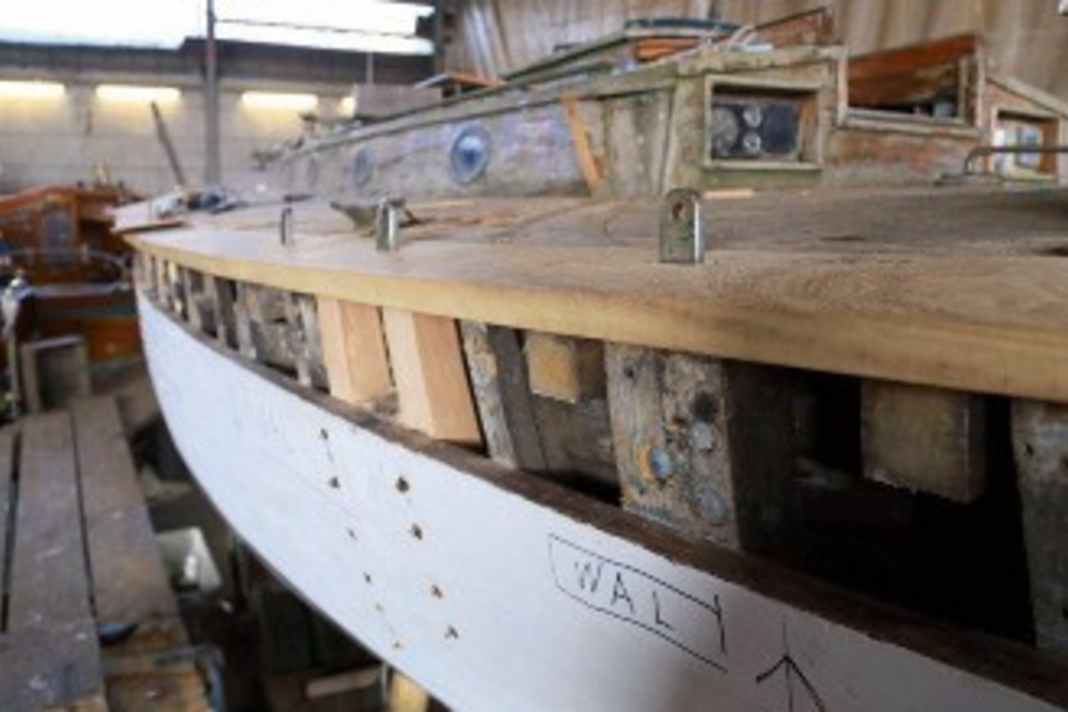


Volker Reineke and his colleagues from Jade-wind e. V. have had a challenging few months. The organisation was founded to renovate the "Klaus Störtebeker III".
For years, she had been abandoned to her fate in the Ems-Jade Canal. "When we first became interested in the ship, she was 240,000 euros in debt," recalls Reineke. He offered the insolvency administrator one euro - on the condition that he could withdraw from the purchase contract after an appraisal.
"After initially rejecting the offer, he apparently realised the risk associated with the further deterioration of the ship and relented," says the first chairman of the association. Since then, donations have been acquired and the first construction phases have already been completed.
The "KS3" will be overhauled by the Bültjer shipyard. Experts have estimated the total project volume at around 250,000 euros.
A fifth of this has already been raised. "Once the refit is complete, children and young people will learn to sail the 'Störtebeker' again," explains Reineke.
In addition to navigation and seamanship, the main aim is to teach young people social skills. "I have the feeling that many young people lack this these days," says Reineke.
He wants to close this gap with his club mates. But there is still a lot of work ahead of them until then. "We hope to have completed the work by the summer of 2026. However, it is clear that I will then step down and hand over the helm to the younger generation," explains Reineke.
He considers his mission complete as soon as young people start travelling on the ship again.

